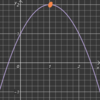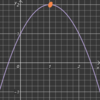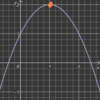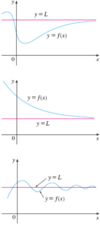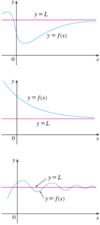Calculus (Columbia) Flashcards
Envision
how a
function is like a
machine.

A
_____ f is a
rule that assigns a
unique value
y = f(x) to each
input x ∈ D?
function

A
function f is a
_____ that assigns a
unique value
y = f(x) to each
input x ∈ D?
rule

A
function f is a
rule that assigns a
_____
y = f(x) to each
input x ∈ D?
unique value

A
function f is a
rule that assigns a
unique value
y = f(x) to each
_____ x ∈ D?
input

The
- *_____** of function f is the
- *set** of all
- *x ∈ ℝ**
s. t. - *f(x) is defined**.
domain
Picture:
A porn set where a domain-atrix with a red x over her nethers whipping an unsure British Red Guard gimp (who says “∈ℝ…”) while she screams “F(X) IS DEFINED!”
The
- *domain** of function f is the
- *_____** of all
- *x ∈ ℝ**
s. t. - *f(x) is defined**.
set
Picture:
A porn set where a domain-atrix with a red x over her nethers whipping an unsure British Red Guard gimp (who says “∈ℝ…”) while she screams “F(X) IS DEFINED!”
The
- *domain** of function f is the
- *set** of all
- *_____**
s. t. - *f(x) is defined**.
x ∈ ℝ
Picture:
A porn set where a domain-atrix with a red x over her nethers whipping an unsure British Red Guard gimp (who says “∈ℝ…”) while she screams “F(X) IS DEFINED!”
The
- *domain** of function f is the
- *set** of all
- *x ∈ ℝ**
s. t. - *_____**.
f(x) is defined
Picture:
A porn set where a domain-atrix with a red x over her nethers whipping an unsure British Red Guard gimp (who says “∈ℝ…”) while she screams “F(X) IS DEFINED!”
In set notation, the
domain of function f is
D = {_____ | f(x) is defined}.
x ∈ ℝ
In set notation, the
domain of function f is
D = {x ∈ ℝ | _____}.
f(x) is defined
The
domain of
f(x) = x2 is
_____.
D = ℝ
The
domain of
any polynomial is
_____.
D = ℝ
In set notation,
the
domain of
1
x − 1
is _____.
D = {x ∈ ℝ | x ≠ 1}
In inverval notation,
the
domain of
1
x − 1
is _____.
D = (−∞, 1) ∪ (1, ∞)
(a, b)
is an
[open / closed / neither]
interval (or set).
()pen
[a, b]
is an
[open / closed / neither]
interval (or set).
[ losed
[a, b)
is an
[open / closed / neither]
interval (or set).
neither
What is
[a, b]
in
interval notation?
[a, b] = {x ∈ ℝ | a < x < b}
What is
(a, b)
in
interval notation?
(a, b) = {x ∈ ℝ | a < x < b}
Envision
A ∩ B.


Envision
A ∪ B.


The
_____ of function f is the
set of all
possible values of y = f(x)
for some
x ∈ D.
range

The
range of function f is the
_____ of all
possible values of y = f(x)
for some
x ∈ D.
set





























